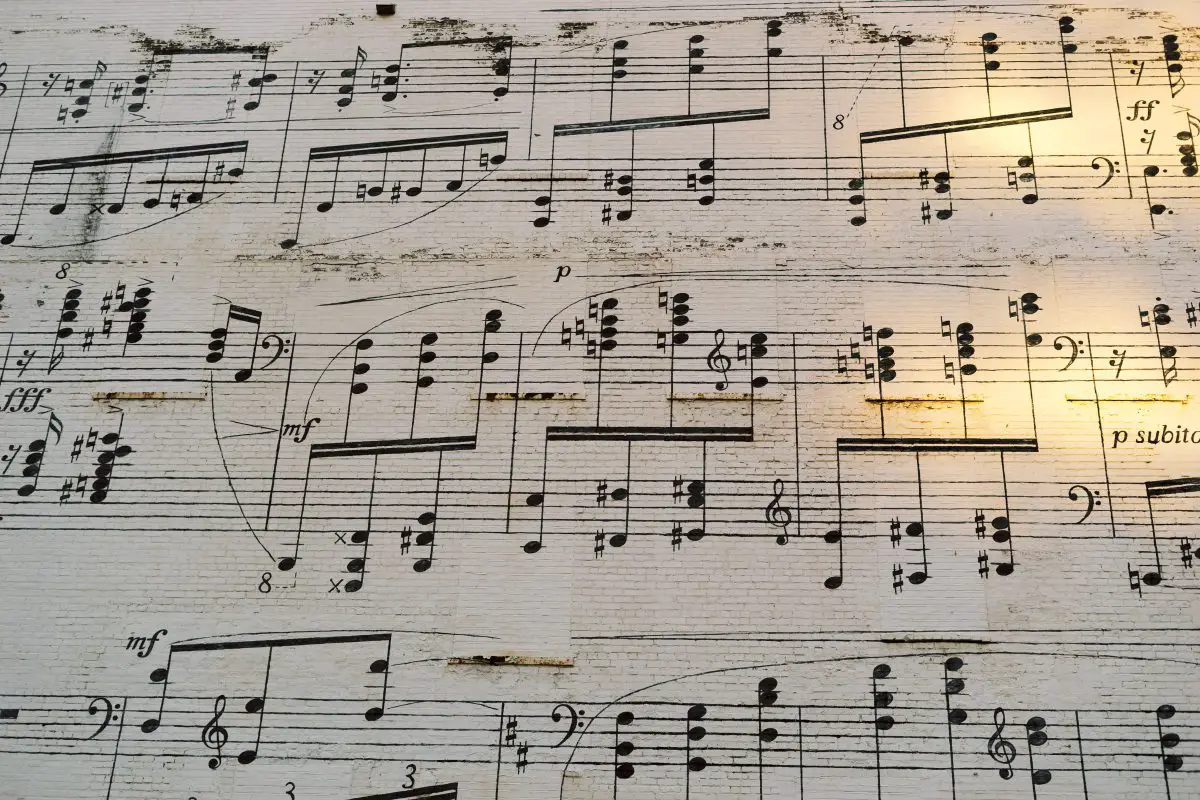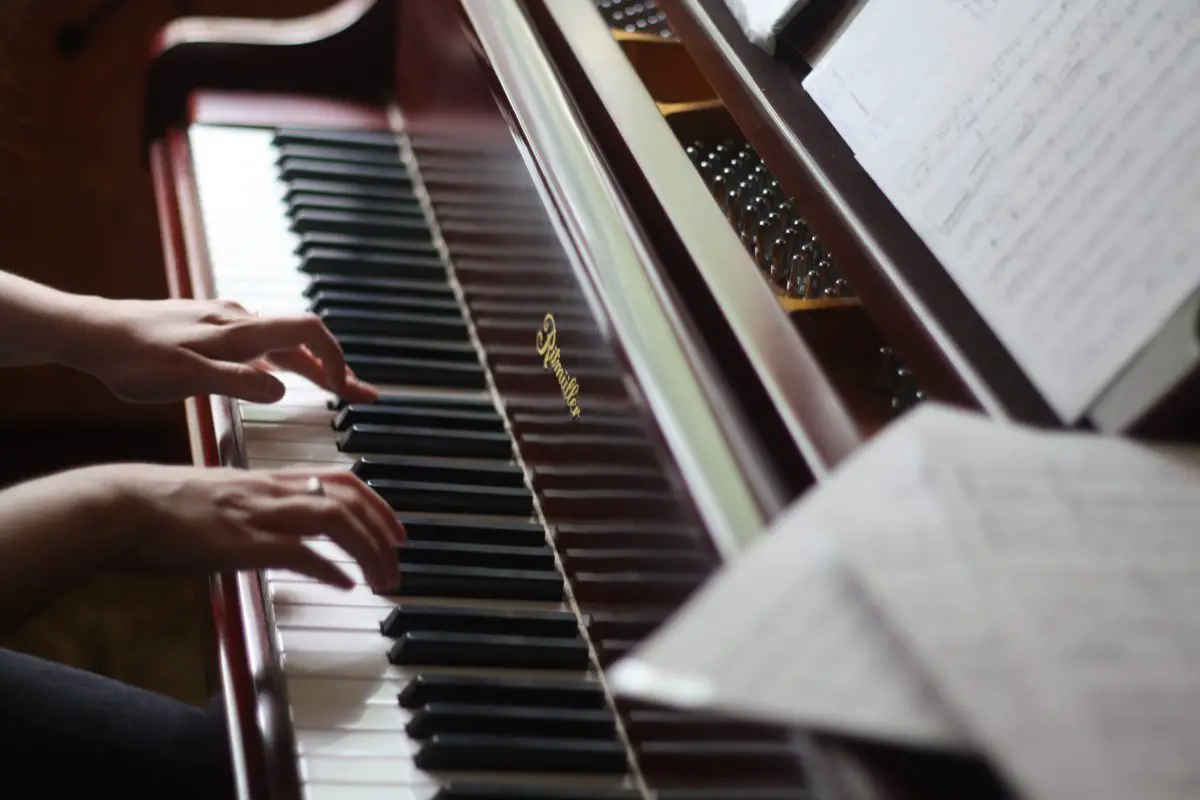Ever tried to read a fresh piece of sheet music and found yourself face-to-face with a strange-looking symbol that’s nothing like your standard flat or sharp sign? What’s that all about? Get ready to unlock the mystery of the natural sign, the Control-Z of the music notation world. This magical symbol brings your tunes back to their natural vibe after a wild sharp or flat sojourn.
What is a natural sign? A natural sign in music nullifies the effect of any preceding accidental sign on a note, effectively bringing the note back to its original, ‘natural’ pitch. In simple terms, it’s the control-Z of music notation, taking your beats back to their original vibe.
What is a natural sign?
A natural sign, as it is known in music, cancels out any preceding accidental sign on a note. In other words, it restores a note to its original, ‘natural’ pitch. For instance, let’s say the last note you played was B flat. If the next note is decked out with a natural sign, you’ve got to play a simple B with no flats or sharps attached. Likewise, if D sharp was your last note, a natural sign takes it back to a plain old D.

A natural sign is like the understated, minimalist cousin of the sharp sign. It looks somewhat similar, but its lines are a bit shorter.
What does a natural sign look like?
A natural sign is like the understated, minimalist cousin of the sharp sign. It looks somewhat similar, but its lines are a bit shorter. You’ll find it chilling on the same line or space as the note it affects. Its effect lasts throughout the measure it’s in. As soon as you start on a new measure, the natural sign’s job is done.
AKAI Professional MPK Mini MK3

AKAI Professional MPK Mini MK3
How do you play a note with a natural sign?
When a natural sign pops up in your music sheet, the key you’re about to play is always a white key. That’s a departure from sharps and flats, which can rock either black or white.
What does a natural sign do to previous accidentals? It cancels them out. If the former note carried a sharp or flat sign, a natural can zing it back to normalcy.
Do natural signs play well with double sharps and double flats?
Yes, they do. The natural sign lives up to its chill persona even in the face of double sharps or double flats. All you usually need is a single natural. Occasionally, you might spy two naturals (♮♮), but the lone ranger is a common sight.

What’s special about natural notes on a piano?
Natural notes are the white keys on a piano. They march along the C-D-E-F-G-A-B parade. Following B, the next trooper is C, and the same pattern continues. These lil’ champs make up the C major scale which, since it’s all-natural, is often considered the natural major scale.
Are natural signs used in key signatures?
Well, not really. They are quite lone wolves. It’s rare to find a natural sign in a key signature. Most of the time, the notes are assumed to be natural unless indicated otherwise with a sharp or flat. If you do spot a natural sign in a key signature, chances are, it’s the composer’s way of letting you know they want to cancel one of the original accidentals.
Why is learning about natural signs important for music production?
When you’re crafting beats on your DAW or laying tracks for your next hit, understanding natural signs can significantly improve your music transcription skills. It makes shifting between different keys and deciphering sheet music a breeze. Yeah, it’s nuts how such a simple concept can ripple out major effects on your music!
When diving into the world of music production or setting up a home recording studio, understanding the music notation, especially natural signs, is crucial. Here’s a quick data table highlighting the effects a natural sign can have on your creations.
| Aspect | Effect of Understanding Natural Signs |
|---|---|
| Transcription | Simplifies transcribing music from sheets into your DAW |
| Key Signature | Helps in quickly shifting between different key signatures |
| Reading Sheet Music | Makes reading sheet music easier and faster |
| Composing | Gives you more control over your composition and improvisation |
Advantages and disadvantages of using natural sign
Using natural signs in music notation can offer both advantages and disadvantages. Let’s explore them further to understand how they can impact musicians and the overall musical experience.
Advantages of using natural sign
Natural signs in music notation can bring several benefits to musicians, making their performance and understanding of musical compositions more efficient. Here are some advantages:
- Clarifies altered pitches: Natural signs are used to cancel out sharps or flats from previous notes in a measure. This helps to clarify the intended pitch, making it easier for musicians to play the correct notes and maintain accuracy.
- Enhances readability: By providing a clear indication of when accidentals are canceled, natural signs contribute to the overall readability of the music notation. Musicians can quickly identify the intended pitches without confusion, reducing the chances of errors.
- Promotes musical interpretation: Natural signs help musicians interpret the musical intent of the composer. When used appropriately, they can guide performers to emphasize certain melodic or harmonic elements, enhancing the expressive quality of the music.
- Streamlines music writing: When composers use natural signs effectively, it simplifies the music notation process. By canceling accidental symbols, it allows composers to write music more efficiently and reduces visual clutter in the notation.
Disadvantages of using natural sign
While natural signs offer benefits, they also have some potential drawbacks that musicians should be aware of. Here are a few disadvantages:
- Requires careful attention: Musicians must pay close attention to the presence of natural signs in the notation to ensure they play the correct pitches. Neglecting natural signs can lead to unintentional alteration of notes, resulting in inaccuracies in the performance.
- Possibility of misinterpretation: In some cases, the use of natural signs may introduce ambiguity or confusion, particularly when multiple accidentals are present in a measure. Musicians need to carefully analyze the musical context to avoid misinterpreting the intended pitches.
- Inconsistent usage: The interpretation and usage of natural signs can vary depending on the musical style, historical period, or individual composer. This inconsistency may require musicians to familiarize themselves with different conventions, potentially causing challenges when playing music from various sources.
- Complex passages may become challenging: When encountering complex musical passages that frequently use accidentals and natural signs, musicians may find it more challenging to navigate and perform accurately. The presence of multiple accidentals and naturals requires meticulous attention to detail and a thorough understanding of the musical composition.
By considering both the advantages and disadvantages of using natural signs in music notation, musicians can make informed decisions and approach their performances with greater accuracy and clarity.
If you want even more great tips and information, check out the video.
Frequently asked questions (FAQ)
Do you still have questions about what a natural sign is? Below are some of the most commonly asked questions.
Can natural signs alter the tempo of a composition?
No, natural signs don’t have any effect on the tempo or speed of composition. They solely affect the pitch of a note, changing it from a sharp or flat to its natural state.
Can a natural sign influence a song’s rhythm?
While a natural sign can bring your note back to its smooth, “natural” state, it doesn’t directly influence the rhythm or beat of your song. That’s the job for the time signatures and rhythm notation.
Are natural signs crucial for music production software?
Natural signs are fundamental for MIDI programming and music production software like DAWs. A precise understanding of these signs can enhance your transcription process from sheet music to the digital platform and allows for more accurate programming of virtual instruments.
Conclusion
We’ve jammed through the gig of natural signs together, and hopefully, it’s not as hard-rock as you initially thought! It’s all about getting back to the basics – or should I say back to the ‘naturals’? Let’s yea, that’s a bit of a flat joke. Now, let’s turn up the volume and make more music, shall we?
Did I cover everything you wanted to know? Give me a shout in the comments section below. I read and reply to every comment. If this backstage pass to understanding natural signs struck a chord with you, share it with your bandmates and take a tour of my full blog for more music theory insights. Thanks for reading, and don’t forget to keep the beat alive!
Key takeaways
This article covered the fundamental aspects of natural signs in music notation. Here are some key takeaways:
- A natural sign resets a sharp or flat note back to its original pitch.
- It’s most commonly used within a measure to cancel out a preceding accidental.
- White keys on a piano are considered natural notes.
- A natural sign can cancel out double flats or double sharps.
- Understanding natural signs can significantly enhance music transcription and production processes.















